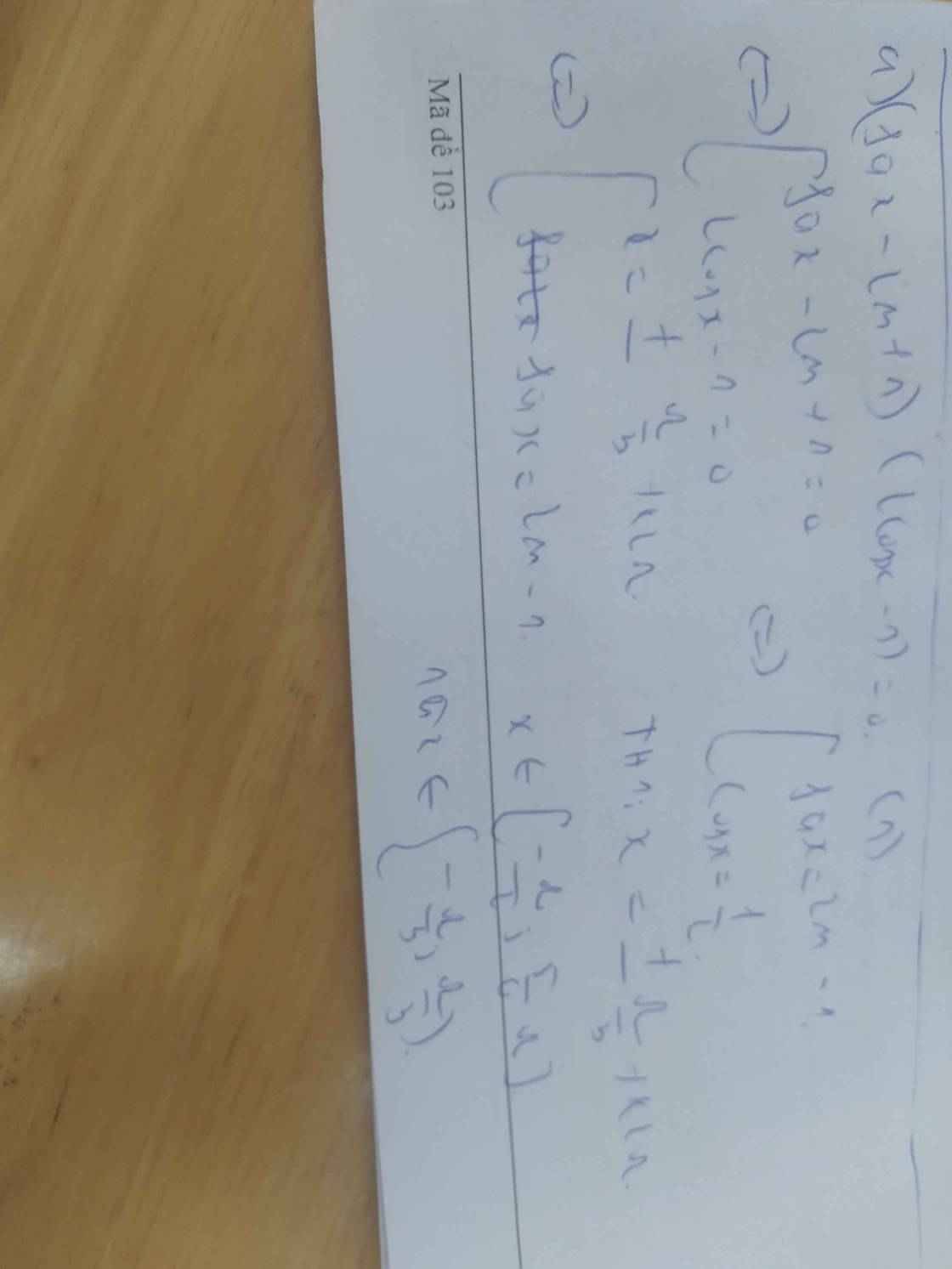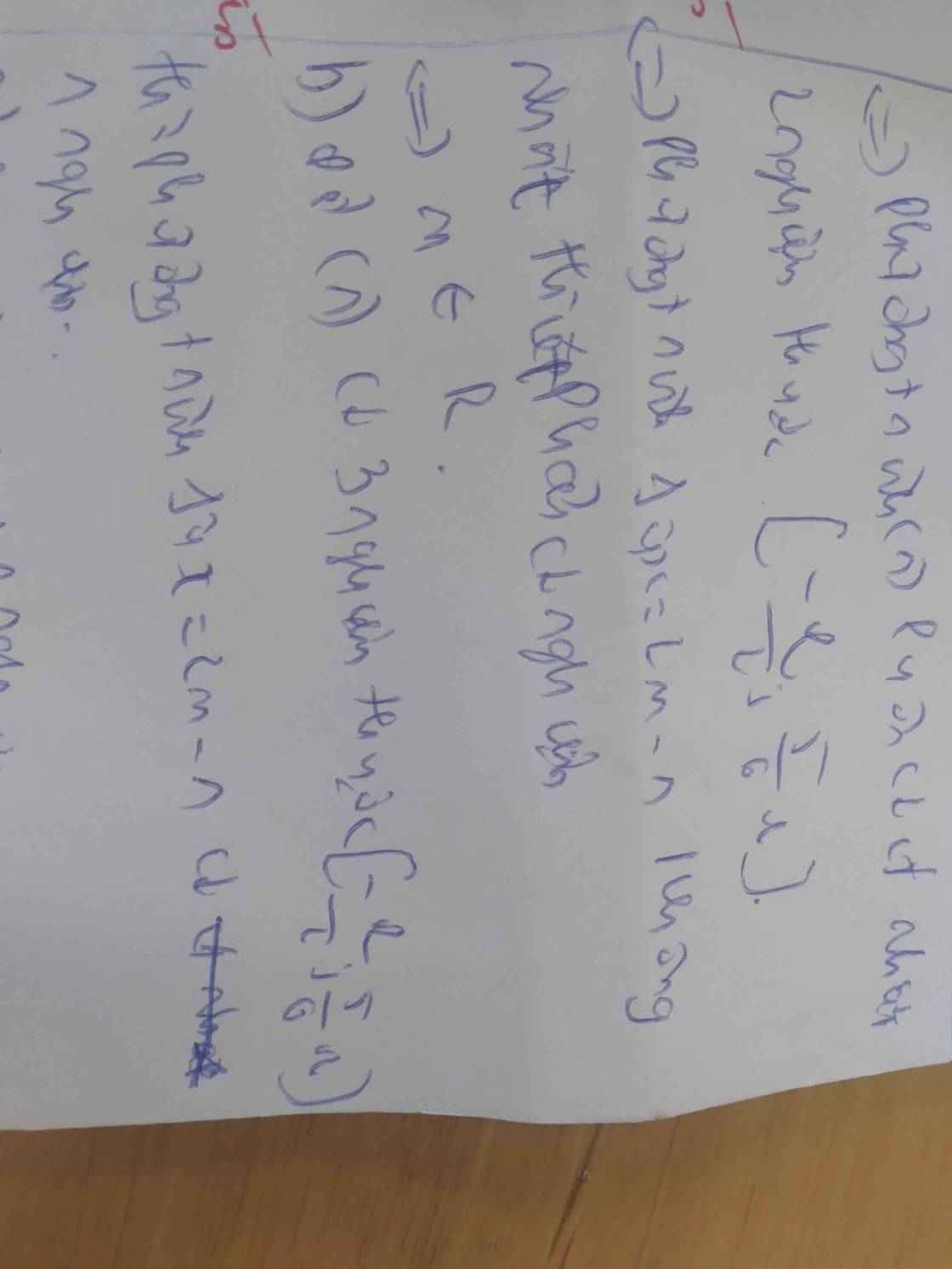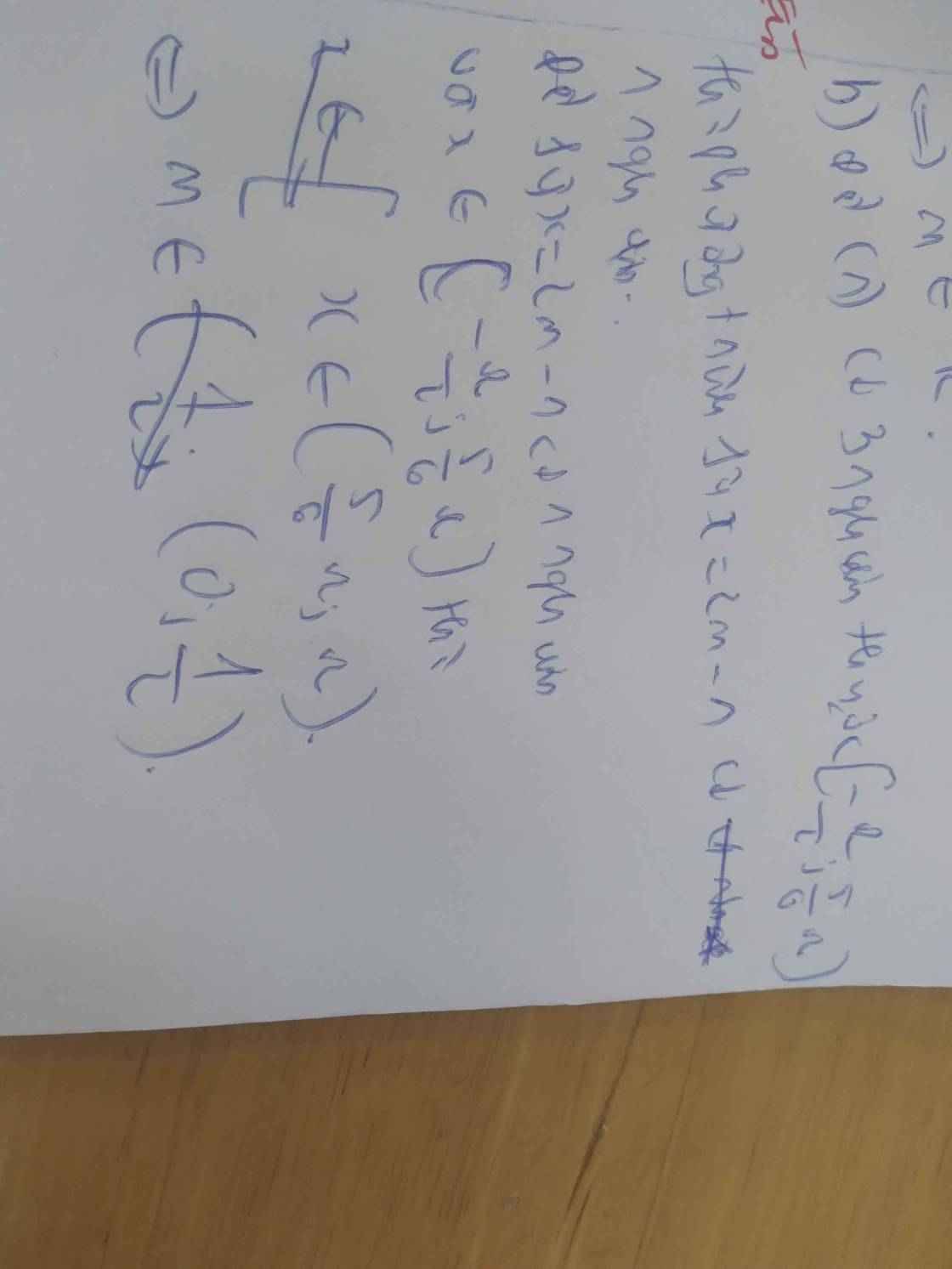Câu 1: Tích các nghiệm trên khoảng left(dfrac{pi}{4};dfrac{7pi}{4}right)của phương trình cos2x-3cosx+20 Câu 2: Tìm tất cả các giá trị thực của tham số m để phương trình 2cos^23x+left(3-2mright)cos3x+m-20 có đúng 3 nghiệm thuộc khoảng left(-dfrac{pi}{6};dfrac{pi}{3}right).Câu 3: Tính tổng T tất cả các nghiệm của phương trình 2sin^2dfrac{x}{4}-3cosdfrac{x}{4}0 trên đoạn left[0;8piright].Câu 4: Giá trị của m để phương trình cos2x-left(2m+1right)sinx-m-10 có nghiệm trên khoảng left(0;piright) là min...
Đọc tiếp
Câu 1: Tích các nghiệm trên khoảng \(\left(\dfrac{\pi}{4};\dfrac{7\pi}{4}\right)\)của phương trình \(cos2x-3cosx+2=0\)
Câu 2: Tìm tất cả các giá trị thực của tham số m để phương trình \(2cos^23x+\left(3-2m\right)cos3x+m-2=0\) có đúng 3 nghiệm thuộc khoảng \(\left(-\dfrac{\pi}{6};\dfrac{\pi}{3}\right)\).
Câu 3: Tính tổng T tất cả các nghiệm của phương trình \(2sin^2\dfrac{x}{4}-3cos\dfrac{x}{4}=0\) trên đoạn \(\left[0;8\pi\right]\).
Câu 4: Giá trị của m để phương trình \(cos2x-\left(2m+1\right)sinx-m-1=0\) có nghiệm trên khoảng \(\left(0;\pi\right)\) là \(m\in[a;b)\) thì a+b là?
Câu 5: Điều kiện cần và đủ để phương trình \(msinx-3cosx=5\) có nghiệm là \(m\in(-\infty;a]\cup[b;+\infty)\) với \(a,b\in Z\). Tính a+b.
Câu 6: Điều kiện để phương trình \(msinx-3cosx=5\) có nghiệm là?
Câu 7: Số nghiệm để phương trình \(sin2x+\sqrt{3}cos2x=\sqrt{3}\) trên khoảng \(\left(0;\dfrac{\pi}{2}\right)\) là?
Câu 8: Tập giá trị của hàm số \(y=\dfrac{sinx+2cosx+1}{sinx+cosx+2}\) là?
Câu 9: Có bao nhiêu giá trị nguyên của tham số m thuộc đoạn \(\left[-2018;2018\right]\) dể phương trình \(\left(m+1\right)sin^2-sin2x+cos2x=0\) có nghiệm?
Câu 10: Có bao nhiêu giá trị nguyên của tham số m để phương trình \(sin2x-cos2x+|sinx+cosx|-\sqrt{2cos^2x+m}-m=0\) có nghiệm thực?

















